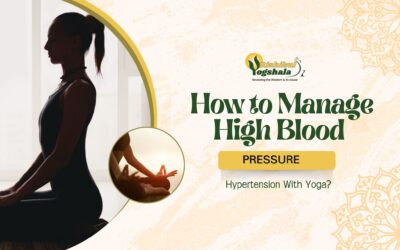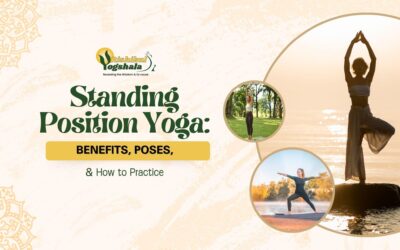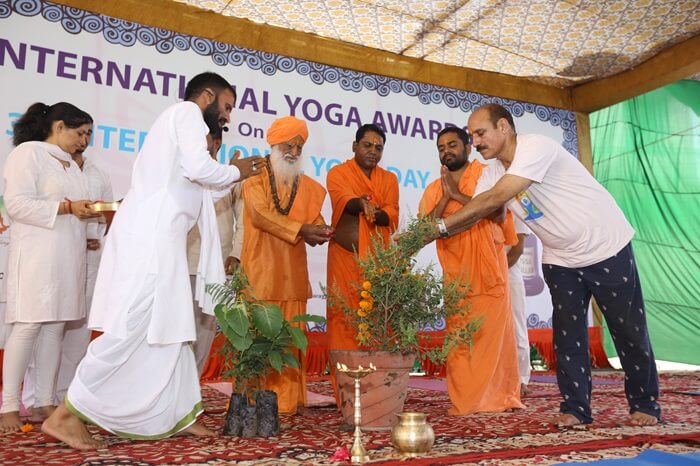Eka Padasana: The One Foot Pose
Yoga is the science of union, and Eka Padasana is a balancing posture that exemplifies this unity. As you perform the steps of the One Foot Pose, you experience neuro-muscular coordination, harmony, and a heightened sense of control over bodily movements. The benefits of One Foot Pose are numerous, and it can be mastered with constant practice and dedication.
Method of Performing Eka Padasana
- Stand on the floor with your feet together and arms by your side.
- Inhale, hoist your arms up above and interlock your fingers together.
- As you exhale, slowly bend forward and lower your arms in front, keeping them straight and parallel to the floor.
- Simultaneously, raise your left leg behind you, keeping the left knee unbent.
- Your right and left legs should form a ‘T’ shape.
- In the final pose, your trunk, hands, head, and left leg should be aligned parallel to the ground, with your right foot holding the body weight.
- Try to balance in the pose for as long as you are comfortable.

Tips for the Pose
- Avoid tilting your pelvis in the final position of One Foot Pose.
- Both legs in the posture should be held straight.
- Gaze in the front direction.
- To release, inhale and bring your left leg into a standing position. Exhale, bring your arms down, and stand in Tadasana.
Urdhva Prasarita Eka Padasana (Standing Split Pose)
The Standing Split Pose tones and stretches the body. It is a balancing inversion that promotes calmness, coordination, and concentration.
- Begin in Virabhadrasana III.
- Bring your hands to rest on the ground so that your torso moves toward the standing leg.
- Shift the weight onto your hands and raise your lifted leg higher, keeping it straight.
- As the leg ascends, the torso descends.
Contraindications of Urdhva Prasarita Padasana:
- Ankle or knee injury
- Lower backache
The Health Benefits of One Foot Pose
Lets discuss ekpadasana benefits in details:
- Strength in Legs: One Foot Pose strengthens both legs. One leg is raised while the other supports the body, enhancing leg strength and stability.
- Stretch to Lower Back: This pose stretches the lower back, promoting flexibility and reducing the risk of lower back problems such as herniated disks and arthritis.
- Great for Shoulder and Neck Muscles: This Pose engages the shoulder and neck muscles, releasing tension and aiding in the relief of cervical spondylitis.
- Unlock the Chakra Powers: Practicing this Pose stimulates the Muladhara and Svadisthana chakras, and the full expression of the pose activates the Sahasrara (crown chakra), promoting stability, vitality, and mental clarity.
- Heightened Concentration: Holding the pose requires focusing on a particular point, which enhances concentration and mental clarity.
- Nervous Coordination: The Pose improves nervous coordination by promoting balance and synchronization of breath and movement.
- Healthy Body: This pose supports a healthy digestive system, improves blood circulation, alleviates backache, reduces fatigue, and promotes overall physical well-being.

The benefits of Eka Padasana are truly remarkable. Step onto a yoga mat and practice the Pose to experience its holistic advantages.
Also Read – 7 Incredible Health Benefits of Eka Pada Pranamasana
Conclusion
Eka Padasana pose, or the One Foot Pose, is a powerful yoga posture that offers numerous health benefits, from strengthening the legs and stretching the lower back to improving concentration and nervous coordination. Regular practice of this pose, along with its variations like Urdhva Prasarita Eka Padasana pose, can lead to a balanced and healthy body and mind. For those interested in deepening their yoga practice and understanding these asanas in greater detail, explore our 200 Hour Yoga Teacher Training in Kerala or 300 Hour Yoga Teacher Training India. For a holistic retreat experience, consider our Ayurveda Retreat in Kerala or Yoga Retreat in Kerala.
For more information, visit our homepage.
















